

Alphabet books offer a vivid insight into the history of literacy and culture, as well as concepts of childhood. The Children's Book Collection at UCLA contains a rich array of these materials, some well-worn and much-used, some still bright and fresh. Each is a gem of print production and graphical imagery from another time and place. Though the history of alphabet books continues to the present, this exhibit focuses on the works in our collections published between 1700 and 1900, including horn books, primers, works of didacticism and seriousness, whimsy and play.
2. A Jumble ABC
3. A Little Pretty Pocket-Book
4. A New Lottery Book of Birds And Beasts
5. A Pretty Play-Thing for Children of All Denominations
8. ABC of Objects for Home And School
10. ABC with Pictures & Verses
12. Alphabet Et Instruction Pour Les Enfans
16. Dolly's ABC Book
17. Flora's ABC
18. Home ABC
22. Hornbook C. 1700
23. Large Letters for the Little Ones
24. Little ABC Book
25. Little People: An Alphabet
26. Martin's Nursery Battledoor
27. Mother Goose ABC
28. My Darling's ABC
29. Orbis Sensualium Pictus Quadrilinguis
30. People of All Nations: A Useful Toy for Girl Or Boy
31. Picture Alphabet
32. Pretty ABC
33. Railway ABC
34. Rusher's Reading Made Most Easy
38. The Alphabet of Old Friends
40. The Amusing Alphabet for Young Children Beginning To Read
42. The Child's Christian Education
45. The Easter Gift
47. The Favorite Alphabet for the Nursery
49. The Franklin Alphabet And Primer
51. The Golden ABC
55. The Moral And Entertaining Alphabet
57. The Old Testament Alphabet
59. The Picture Alphabet for Little Children
62. The Sunday ABC
63. The Union ABC
64. The Young Child's ABC, Or, First Book
65. Tom Thumb's Alphabet: Picture Baby-Books
67. Warne's Alphabet And Word Book: with Coloured Pictures
68. Wood's Royal Nursery Alphabet
Title Orbis Sensualium Pictus Quadrilinguis
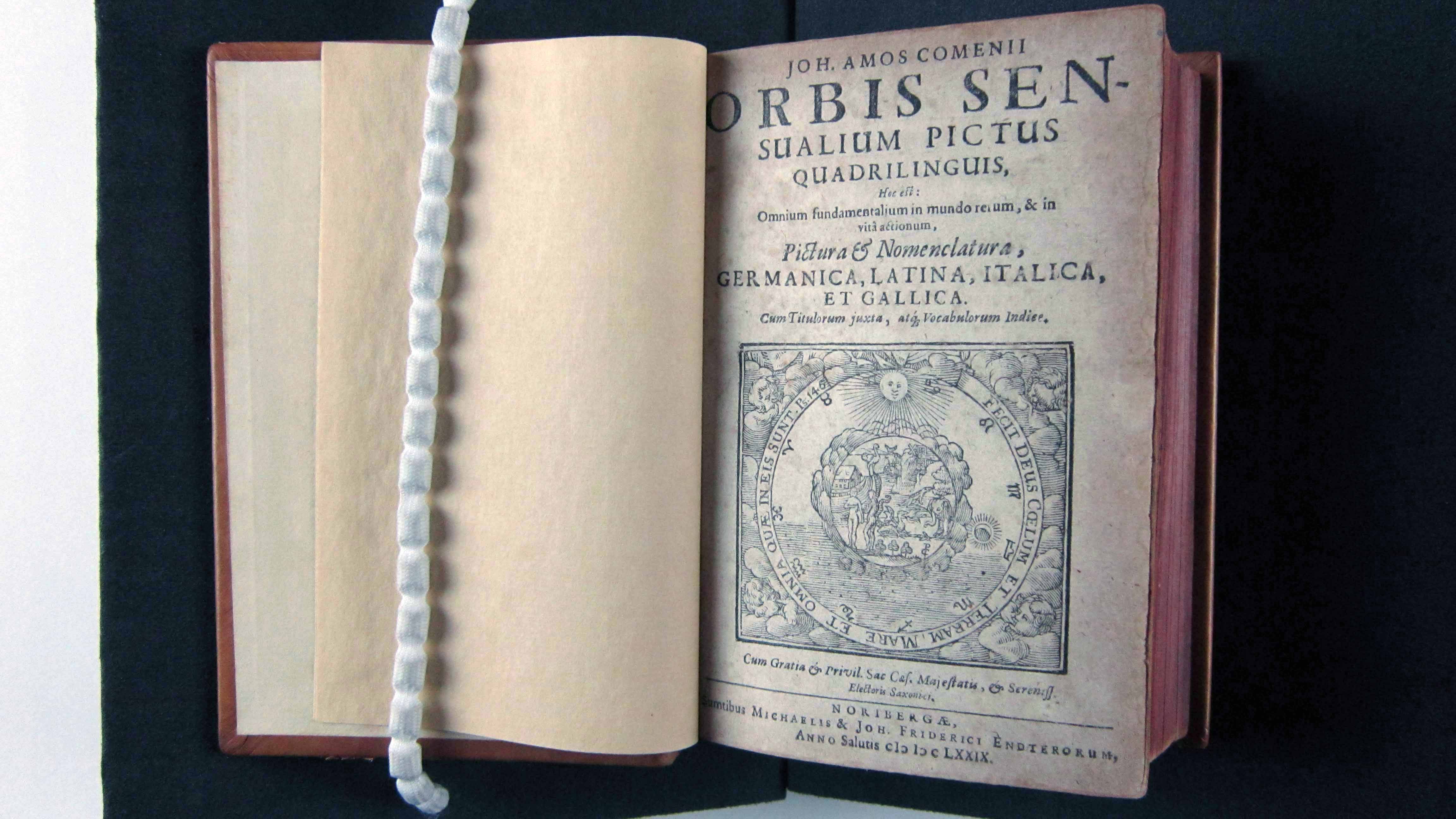
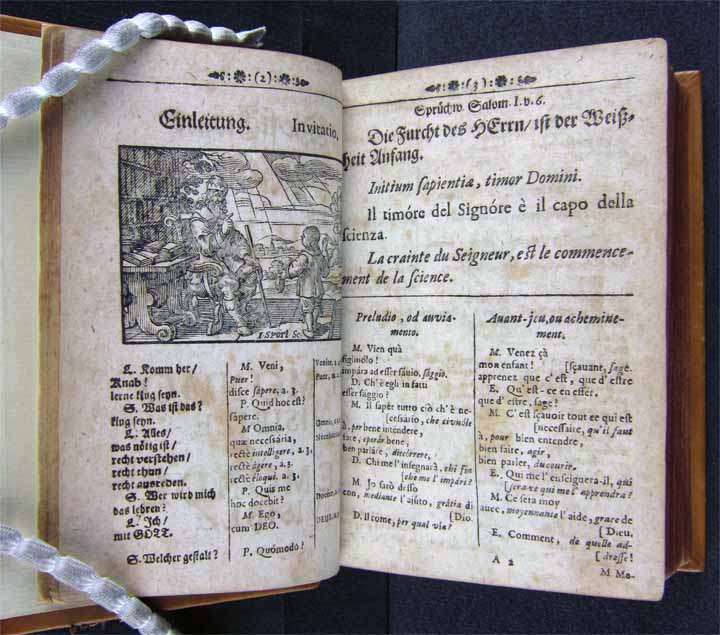
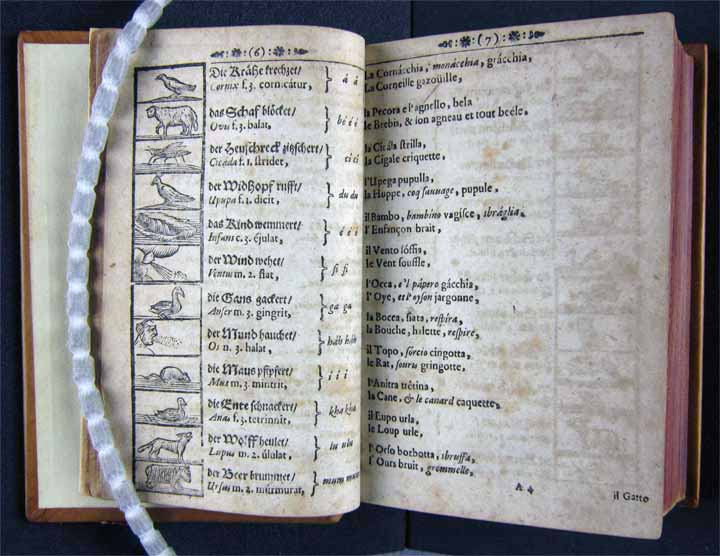
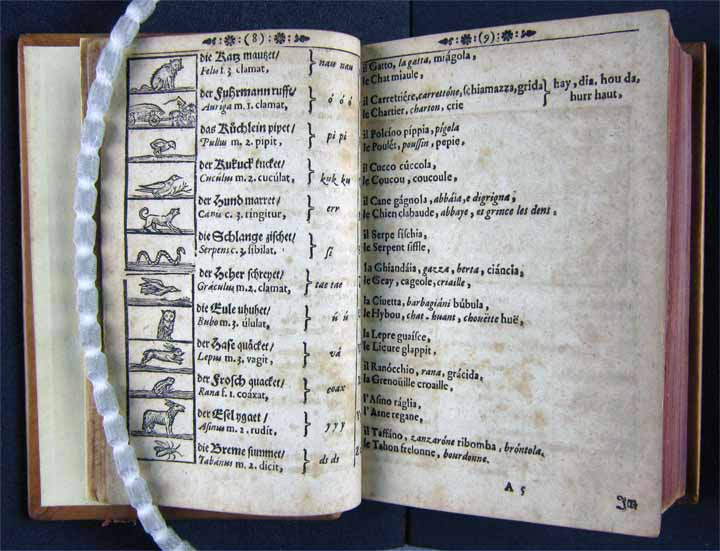
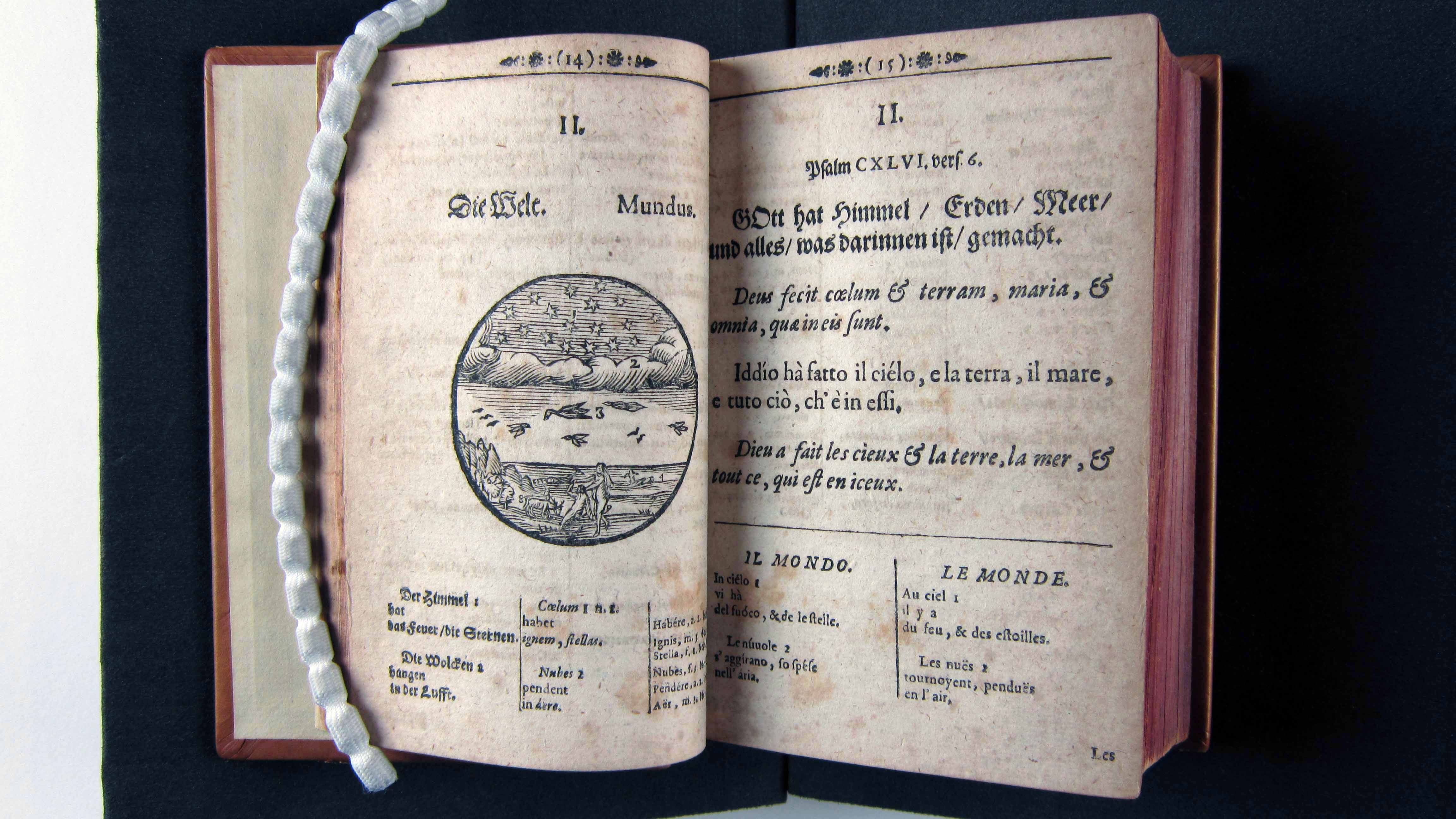
Brief description Tan calf over boards, tooled in blind; all edges red; black leather label on spine.
Full description The educator Johann Amos Comenius published his first edition of the Orbis Sensualium Pictus in 1658 in Nuremberg, Germany. In this substantial book, Comenius provides a brief introduction to the Roman alphabet before launching into encyclopedia-like entries that describe the entire world to the reader. Although this work was likely beyond the reach of all but the wealthiest children, it distinguished itself as one of the first works to appeal to a perceived need of children to learn about the world around them by means of the written word.
Literacy The majority of the Orbis Pictus is not in the form of lessons of language, but rather lessons about the world. Most of this book is in the form of an encyclopedic survey of everything that comprised the world, ranging from God to animals and professions, and even to abstract concepts such as virtues or sins.
The contents of this comprehensive work are framed in the context of language: in an introductory dialog between master and pupil, the master promises to make the pupil wise by showing him the world. Before being shown the world, however, the pupil is urged to learn the letters and their sounds. The letters are briefly introduced alongside animals whose cries resemble the phonics of the respective letter.
Though brief compared to the body of this work, Comenius makes clear that he hopes to bring wisdom to his readers through his encyclopedia. In Comenius' aspirations to provide a surrogate of the world in a single book, he also supports the idea that wisdom is dependent upon the ability to read.
Childhood Though the Orbis Pictus is framed as a dialog between a master and a pupil, Comenius makes clear that in his view childhood was merely a state of uninitiated adulthood rather than a distinct stage of existence. The lessons within Comenius' work do not celebrate or romanticize childhood: though there are a handful of mythological and cosmological elements that we might today recognize as fantastic, they were in earnest at the time. The book as a whole aims to introduce the readers to the world as it really was, not provide respite within a fantasy idyll.
Iconography The Orbis Pictus is a testament to the importance of religion at the time of its publication, and Comenius' encyclopedia of the world is prominently framed within a Christian cosmology. Although it aims to describe the contents of the entire world to its readers, the world described is a decidedly Christian one. The entries within this expansive work begin with God and end with the Last Judgement. Though there are many more secular subjects illustrated within, these other facts of life were unimaginable outside of a Christian framework.
Production Comenius' encyclopedia of the world used many woodcut illustrations to help bring surrogates of the world's component parts to the readers. These woodcuts functioned as diagrams with numbered items within that were paired with the accompanying text. Perhaps because of the early appearance relative to other instructional books, or the ease with which it lent itself to translation, the Orbis Pictus had a long publication history and many editions in various languages, though the contents would eventually become dated as conceptions of childhood changed and the Western world became increasingly secularized.
Creator Johann Amos Cornenius
Publisher Sumtibus Michaelis & John Friderici Endterorum
Publication place Gracechurch-street, Nuremberg
Date 1679
UCLA Call Number CBC LT101 .C73o 1679
Repository UCLA Charles E. Young Research Library, Dept. of Special Collections
Technologies of production Printing, woodcut (process)
Media and Materials Paper, calfskin, board, ink
Additional Information Illustrator: Paul Kreutzberger
Caption